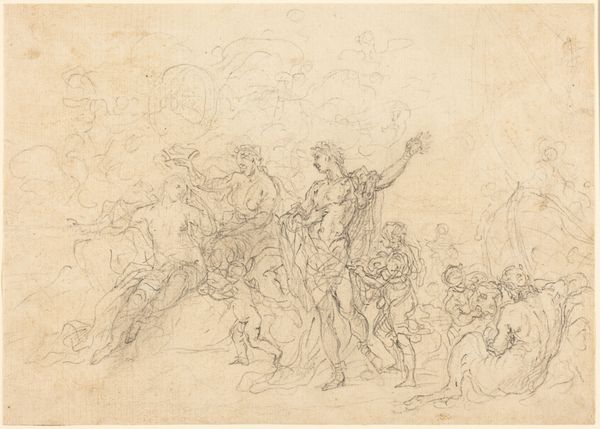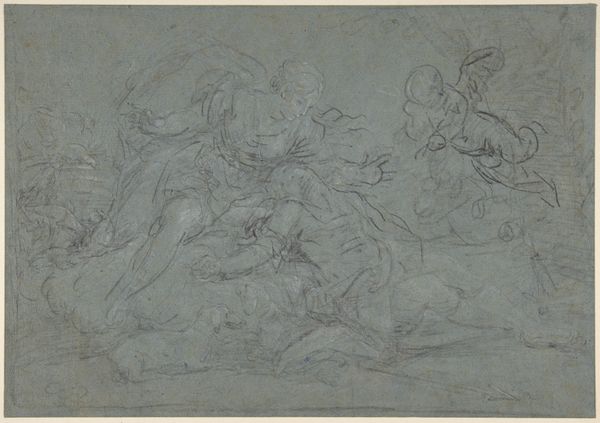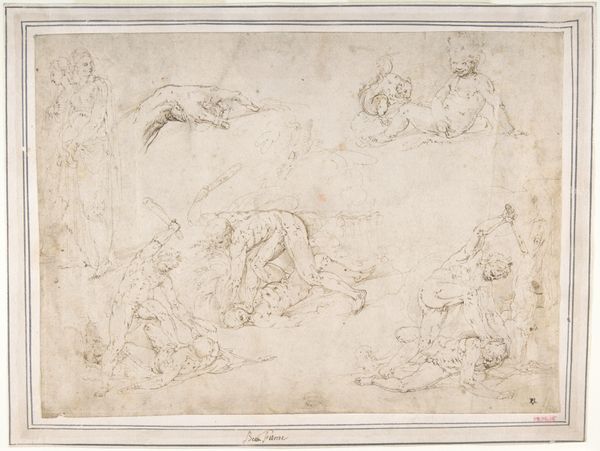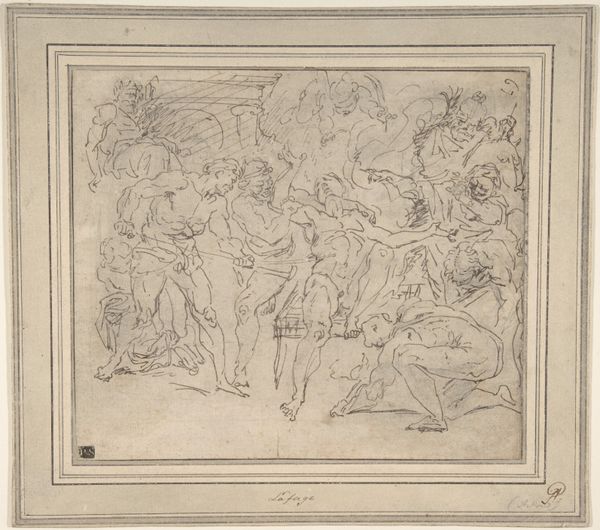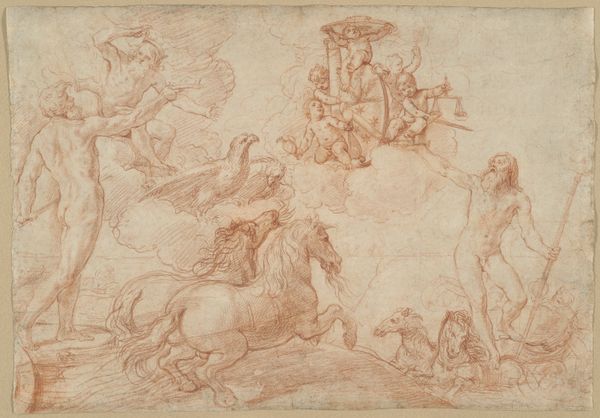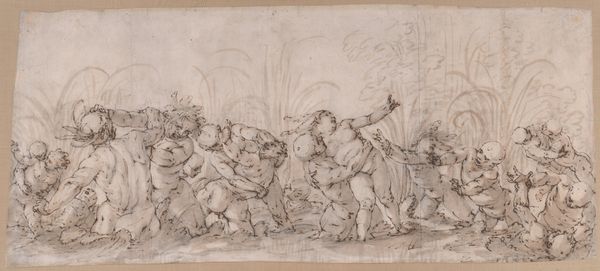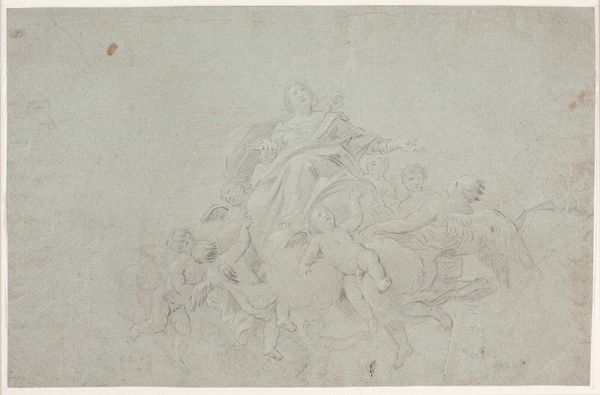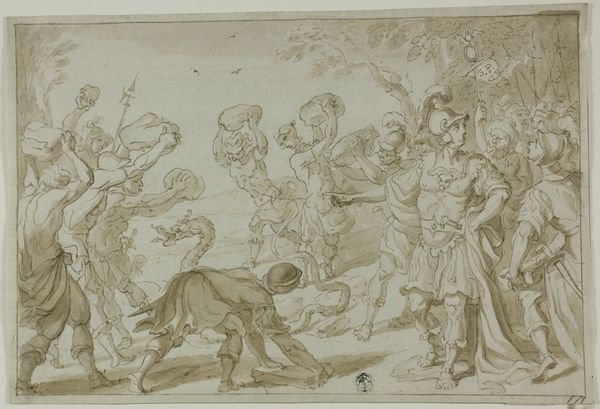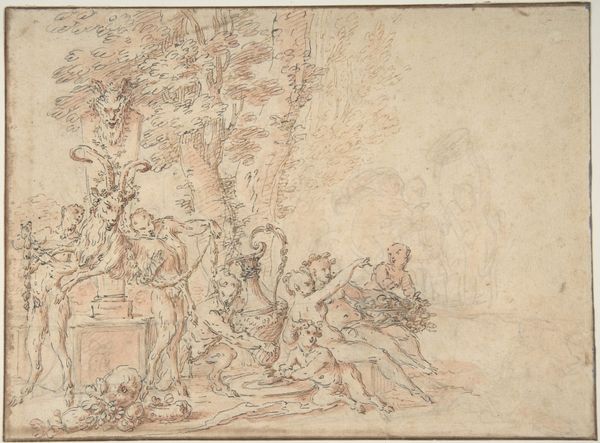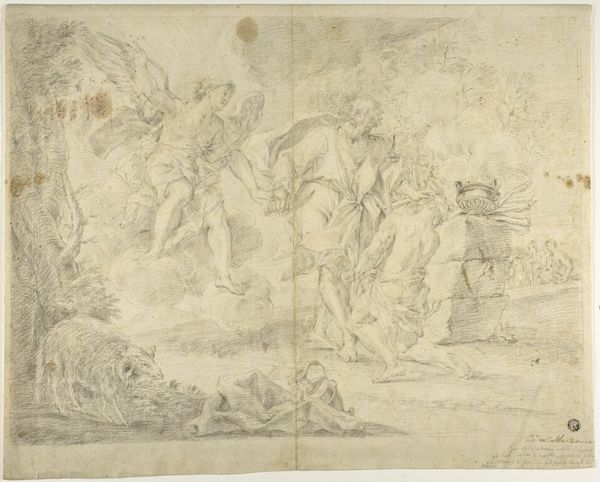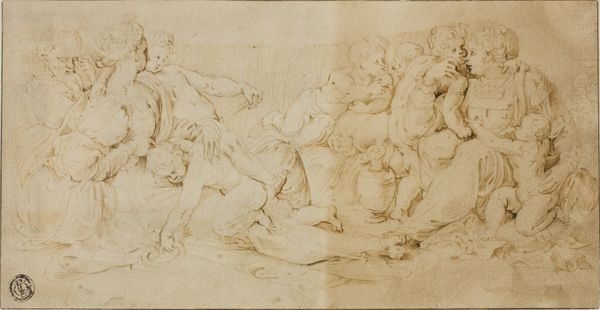
drawing, paper, pencil, chalk, graphite
#
drawing
#
narrative-art
#
figuration
#
paper
#
pencil
#
chalk
#
graphite
#
history-painting
#
academic-art
#
italian-renaissance
#
italy
Dimensions: 275 × 409 mm
Copyright: Public Domain
Editor: Here we have Giuseppe Bartolomeo Chiari's "Study," created around 1686. It’s a drawing done with pencil, chalk, and graphite on paper, and it reminds me of preliminary sketches for a grand historical painting. The composition feels really dynamic, with figures clustered in the foreground. What strikes you most about this piece? Curator: This drawing offers a fascinating glimpse into the art-making process of the period. The academic art style visible here highlights a deliberate connection to Italian Renaissance ideals. Considering the context, it's likely this "Study" served a dual purpose: demonstrating the artist’s mastery and proposing a visual narrative appealing to potential patrons. The museum’s role, of course, shapes how we view it today, transforming a studio practice into a public display of artistic skill. How might the subject itself - potentially a historical or mythological scene - have resonated with the cultural and political climate of the late 17th century? Editor: That's a good question. It makes me think about who these historical paintings were *for*. Was it about reinforcing specific narratives? Curator: Precisely. Paintings like these were powerful tools in shaping public perception of history, morality, and even political power. The patronage system further dictated which stories got told, and how. The art served as propaganda, in many cases, bolstering the status of ruling elites and dominant ideologies. This dynamic composition could have served as preparation for the larger artwork that tells such stories. Editor: So, by understanding the social and political context, we can start to decode the messages embedded within the artwork? Curator: Absolutely! Seeing art as a reflection of, and contributor to, historical forces gives us a richer appreciation for its complexities and its role in society. Editor: That definitely shifts my perspective! I’ll look at similar works with a different eye now, thinking about their intended audience and impact. Curator: Wonderful. Remembering art's place in society illuminates the very forces at work when they were made, seen, and finally, today, when displayed in our museums.
Comments
No comments
Be the first to comment and join the conversation on the ultimate creative platform.

